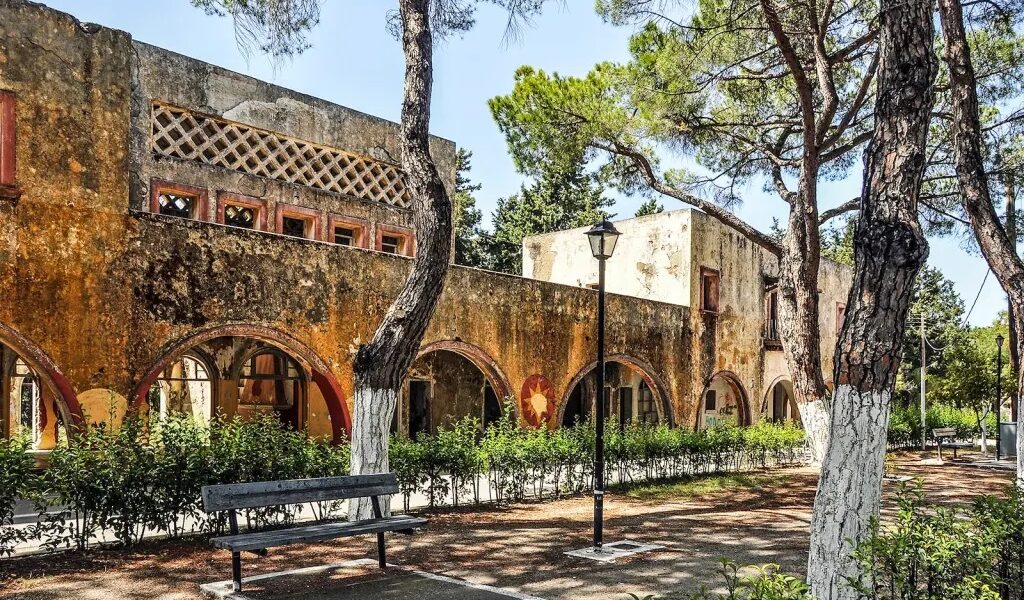Rhodes is the largest of the Dodecanese islands, the most populated island of the South Aegean Region, and the administrative capital.
Rhodes's geographic and strategic importance is evident by the ancient settlements like Kamiros and Lindos huddling around elevated acropolises, the castles of Feraklos and Kritinia, and the phenomenal Palace of the Grand Master of the Knights enclosed by impenetrable buttressed stone walls.
There are also many areas of natural beauty, such as the enchanting Butterfly Valley, the waterfalls at Seven Springs, Mt. Filerimos, and, naturally, being an island, a variety of beautiful beaches.
Rhodes also boasts charming, off-beat villages hidden in valleys and spilling down mountainsides. Although they may not be as picture-perfect as their counterparts on other Aegean islands, they manage to preserve customs and traditions that are quickly disappearing in our fast-paced modern world.
Agios Isidoros
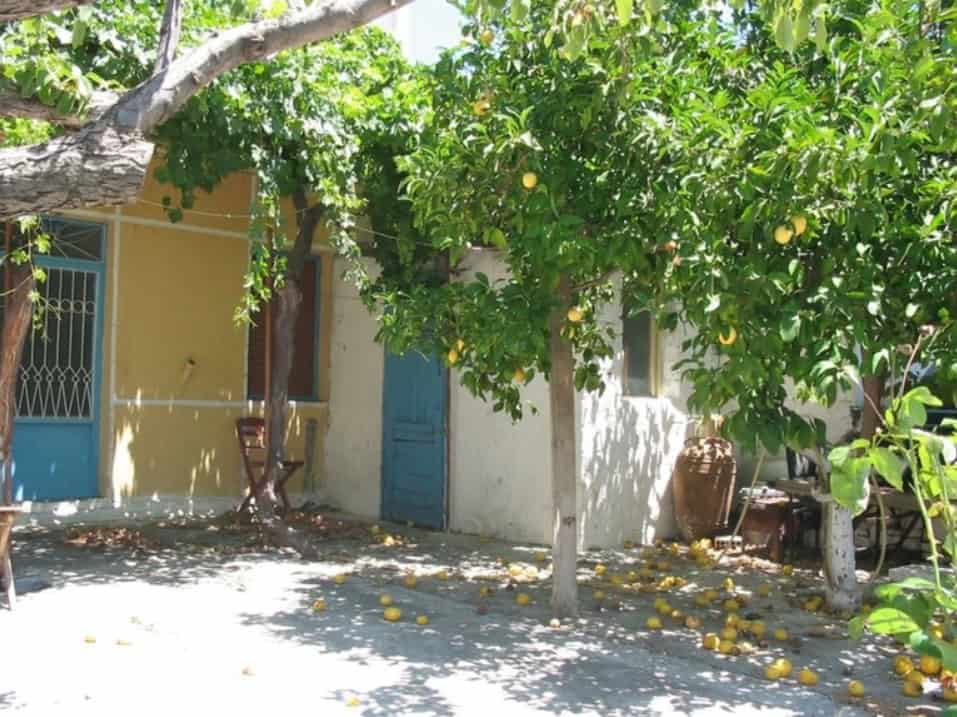
Agios Isidoros is located 532 metres (1745ft) above sea level, halfway up Mount Attavyros, the tallest mountain on Rhodes, 1,215meters (4,000ft) and is where many begin the unmissable hike to its summit to see the remnants of the Temple of Attavyros Zeus.
With eye-catching inland vistas of Rhodes and a central church that lends its name to the village, featuring a tall bell tower, this rural village still supplies plenty of the island's produce, including honey, olive oil, and the heady ‘souma’ – a spirit made from distilled figs.
Now, for those lucky enough to visit during Easter, come witness the unique custom of ‘Vournes‘. Starting on Holy Saturday, the unwed youth of the village lit large bonfires, which they had to keep alight and bright until the torching of Judas, a ritual carried out on Easter Sunday.
The unfortunate youths adjudged to have failed to meet the required fiery expectations are summarily tossed into muddy water-filled ditches ‘vournes’.
Mesanagros
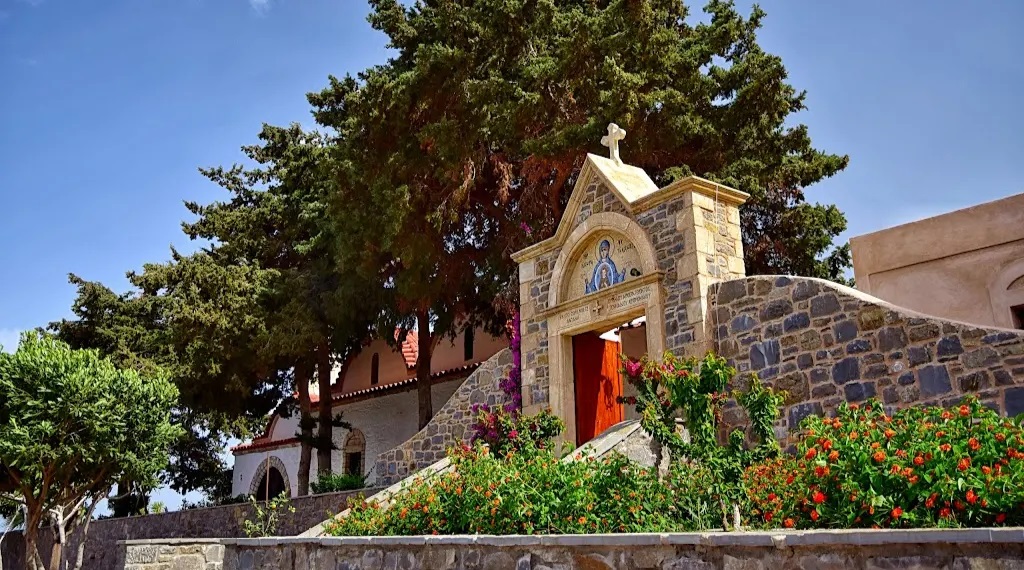
Mesanagros, 83km (51 mi) south of Rhodos Town, is a traditional little village tucked away from the island’s main tourist attractions.
This inland village consists primarily of small farmhouses on narrow alleyways, some with arching features, others with sturdy wooden tree trunks supporting their roofs; these are classic examples of the region’s rural architecture.
The 13th-century church, Koimisis Tis Theotokou, the village’s main landmark, built atop an earlier Christian church from the 6th century, is at the centre of the village. For the best views, head to St. Thomas, a short walk to the southwest of the village.
From the tranquillity of this 14th-century Byzantine-era monastery, close to a small waterfall and surrounded by pines and wild oleander, you can see the wild mountainous landscape and the sea beyond.
Siana
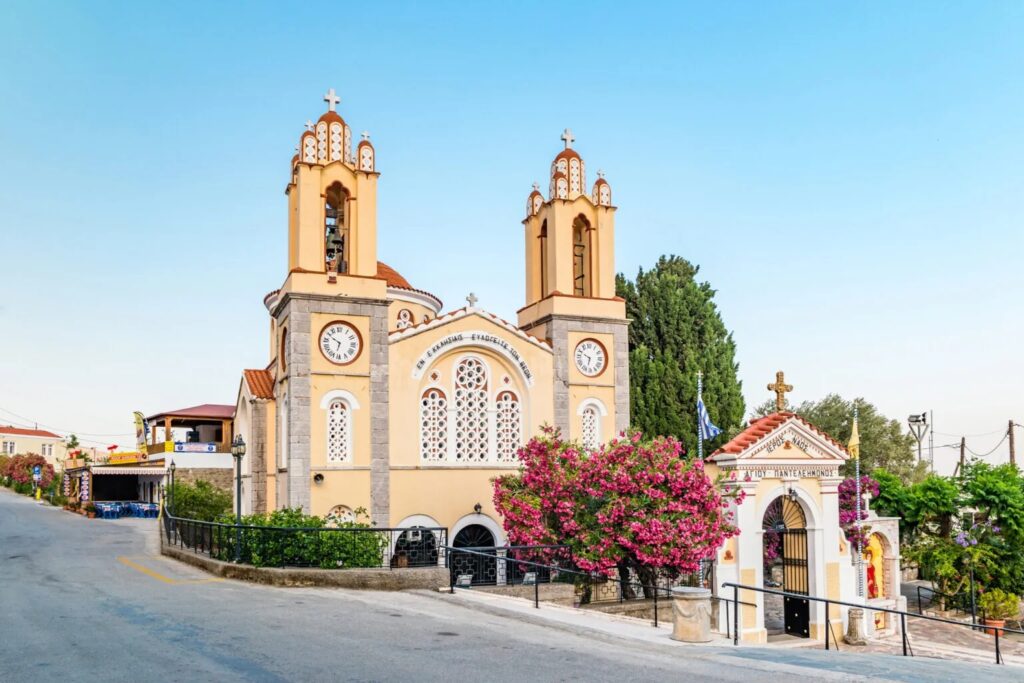
Siana is a small semi-mountainous village on the slopes of Mount Akramytis in the west of the island. The village has a unique feel thanks to a lovely mix of small Cyclade-square cubed houses, stately neoclassical mansions, and modern constructions.
Along the high street, small shops stocked with a variety of goods, including ceramics, colourful rustic rugs, local honey and olive oil, draw in the few visitors who do chance upon the village.
The cafes at the central square are the places to sample locally-made desserts and drinks. Fascinatingly, two churches are facing one another, both dedicated to the same saint, Agios Panteleimonas (the older of the two places of worship dates back to the 10th century).
The village’s old olive press, built in 1920, now serves as a museum offering extensive insight into local olive oil production.
Kritinia
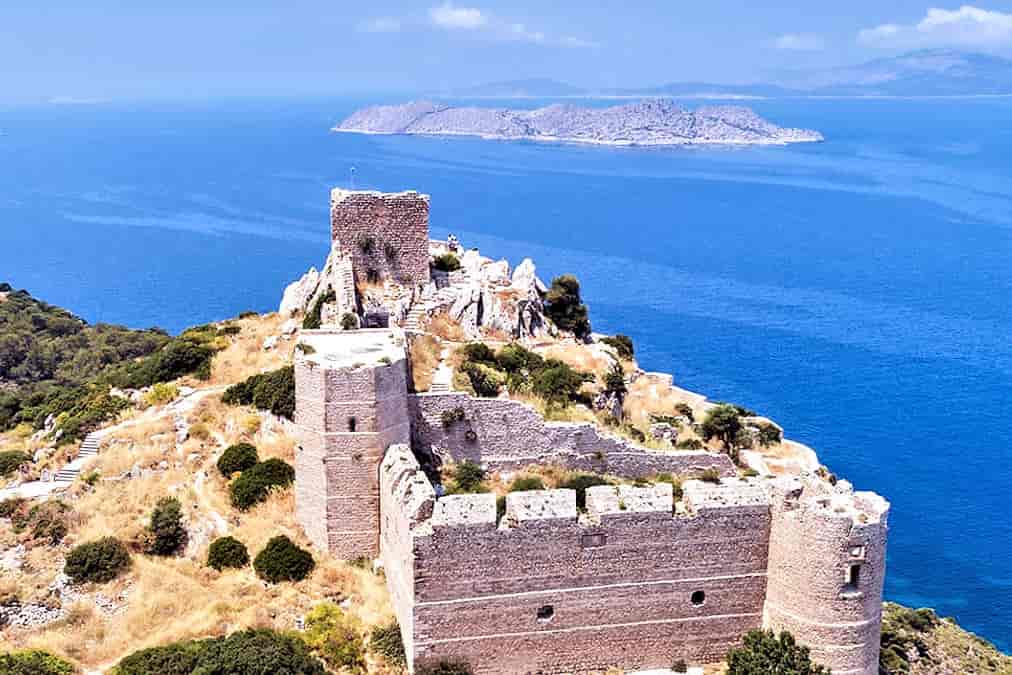
A small village in the west of the island, Kritinia has a local population originally hailing from Crete. During Ottoman rule, Cretan families left their island and relocated to Rhodes in search of a better life; hence, Kritinia's traditional costumes, music, and dances all carry a Cretan style.
The local architecture combines traditional whitewashed homes, modern houses and a few stone buildings, while colourful bougainvilleas, geraniums, oleanders, medlars and vine-adorned small courtyards enhance the village's beauty.
Daskalon Square is the heart of the community and is the perfect place to have a coffee and take in the rustic atmosphere. Kritinia Castle, built by the Knights of the Order of St John in 1472, is on a small hill behind the village and offers far-reaching views of the Aegean.
Salakos
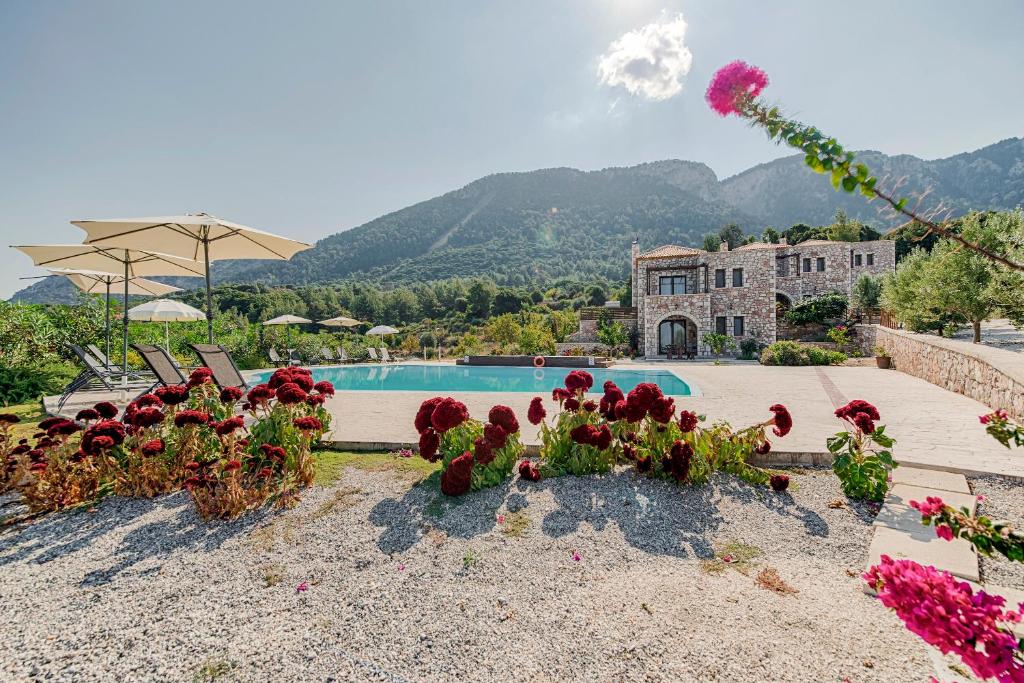
On the slopes of Mount Profitis Ilias at the northwestern edge of Rhodes, Salakos is surrounded by abundant greenery, the most apparent result of the Argyros natural springs next to the village.
Once famous for carved wooden chairs, the rural community is now better known for the walnuts produced in neighbouring orchards. The paved central square, featuring an ornate stone tap, a towering fig tree, and mulberries offering shade to the cafés and tavernas, is the village highlight.
A traditional style has been preserved in many homes with small yards featuring colourful flower gardens.
Eleousa
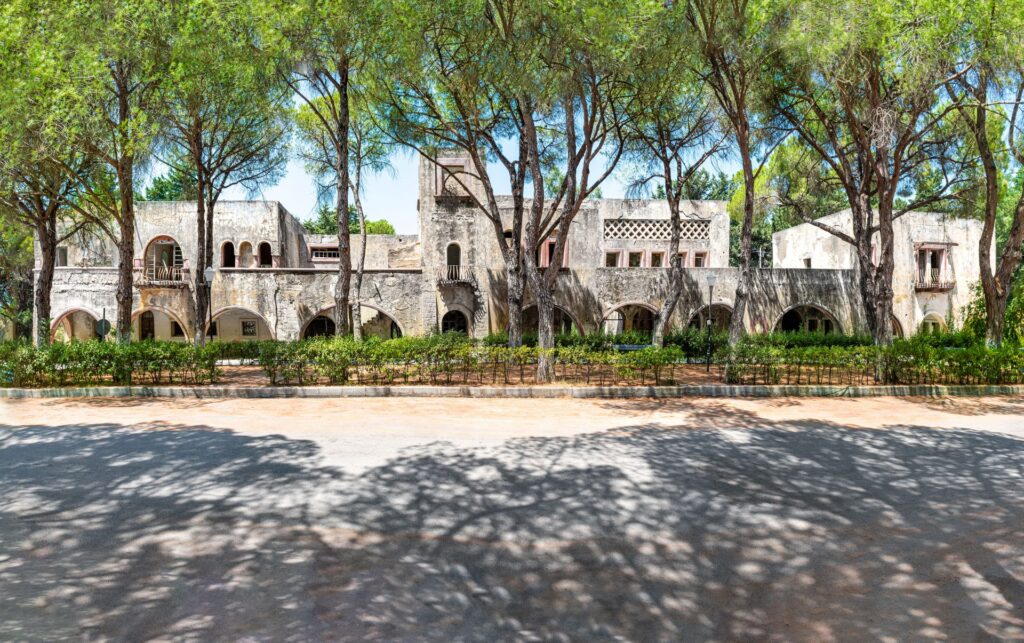
Situated inland, Eleousa may well be the most verdant village in Rhodes. Small and sparsely populated, the village is surrounded by plane trees, conifers, and olive groves, and the murmuring sound of running waters turns it into a small oasis.
During Italian rule between 1911 and 1947, the village was developed in the style of an Alpine town and was known as Campochiaro.
A derelict but still imposing, all that remains from that period is a school that functioned as a sanatorium following the departure of the Italians until 1970 and an aqueduct that runs above the village.
A large round cistern fed by the waters from the Koskinistis spring is home to a small population of the rare Gizani fish, once endemic in the local rivers but now endangered.
Psinthos
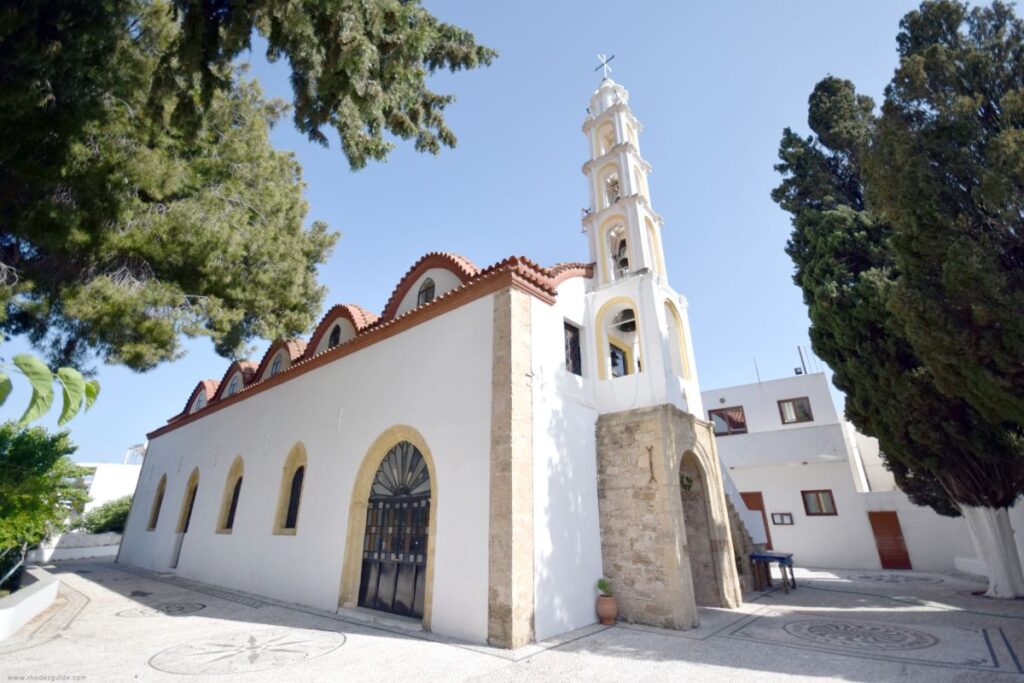
Psinthos, approximately a 40-minute drive south of Rhodes town, is a picturesque, semi-mountainous village.
Famous as the site of the last battle between the Turks and Italians, at first glance, the plane trees and springs give the impression of a setting from northwestern Greece rather than a Dodecanese island locale, but look closely and the small traditional houses here serve to remind visitors they are on Rhodes.
Naturally, the village square, with small traditional cafes and neat tavernas renowned for their quality meat dishes, is a popular destination for residents of the capital, and it attracts visitors en route to the nearby Petaloudes nature reserve, the well-known Butterfly Valley.
Archangelos
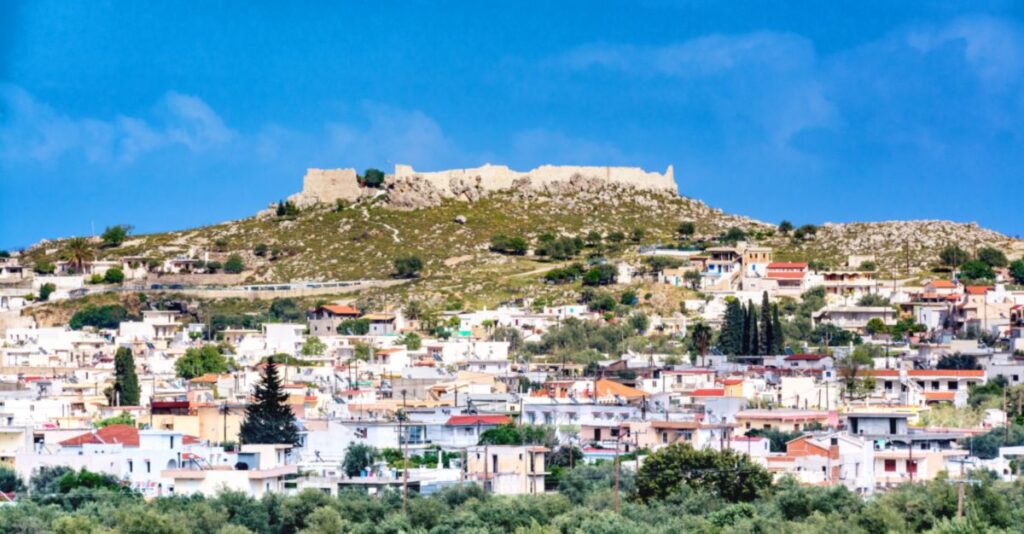
Archangelos, one of the biggest towns on the island, was settled during medieval times in a prime location offering natural protection from pirate invasions. The narrow streets, picturesque houses painted in vivid colours, and charming squares adorned with pottery from Lindos retain their traditional character.
The Archangel Michail church, with a fine campanile from 1845, dominates the skyline and houses frescos from the 14th century. Head up to the medieval castle that looms over the town for views over Mount Strongylos and glimpses of the small, black wild horses that live on its slopes.
Voula Akrivaki is a columnist for Travel. Translated by Paul Antonopoulos.
READ MORE: Tinos, the island of spirituality.

